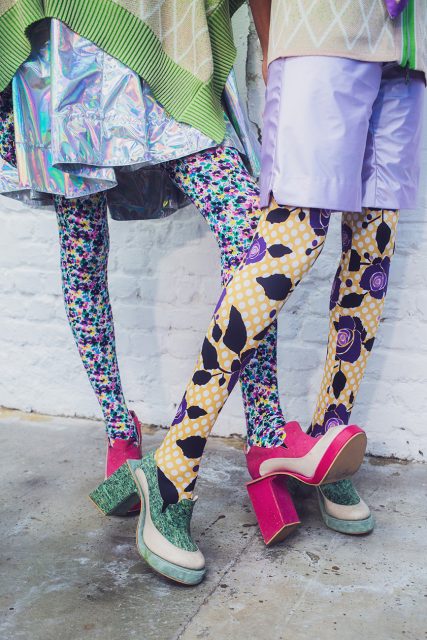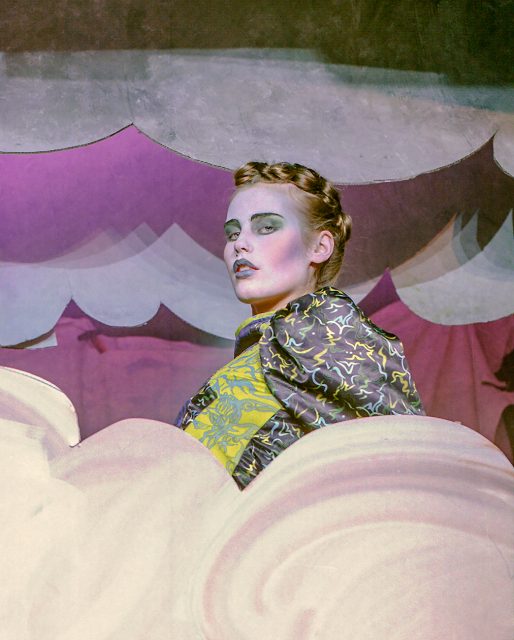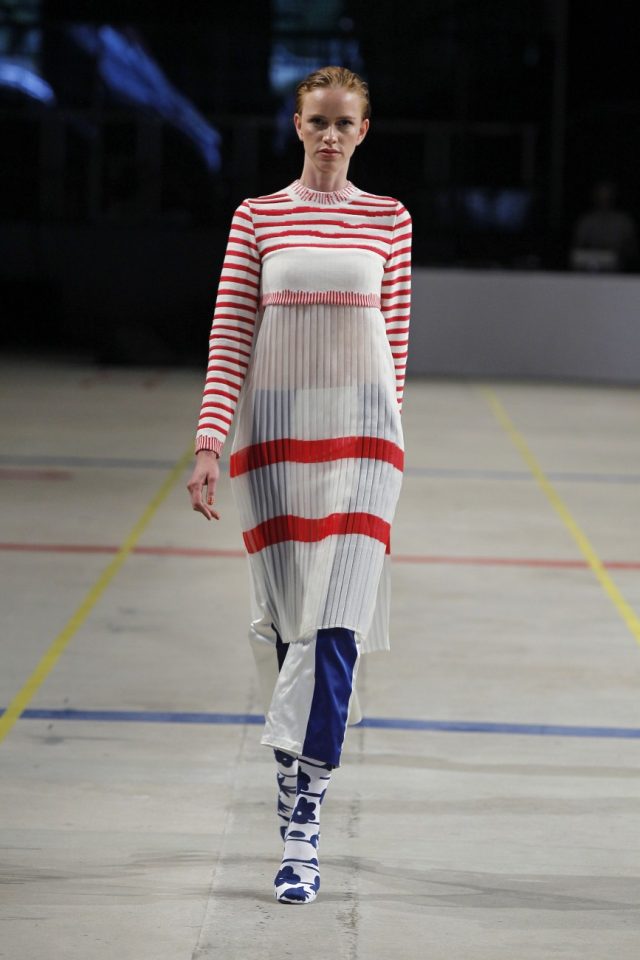Originally from Trieste, Italy, Alessandro Gentile was one of the graduates from Univeristät der Künste’s Schau21, who captivated our attention. Unlike most designers, Alessandro’s calling to fashion wasn’t the most intuitive. With a passion for science and technology, he had initially set out to study Biology and Healthcare whilst back in his homeland. Although he admits that during his studies he observed his fascination for the two growing, he simultaneously came to terms with the fact that it wasn’t his be-all and end-all. It may have taken Alessandro a while to find his calling, but from his creations, it’s clear that he is certainly on the right path. We caught up with him after the show to talk about his BA graduate collection “SELECT MASCULINITY”.
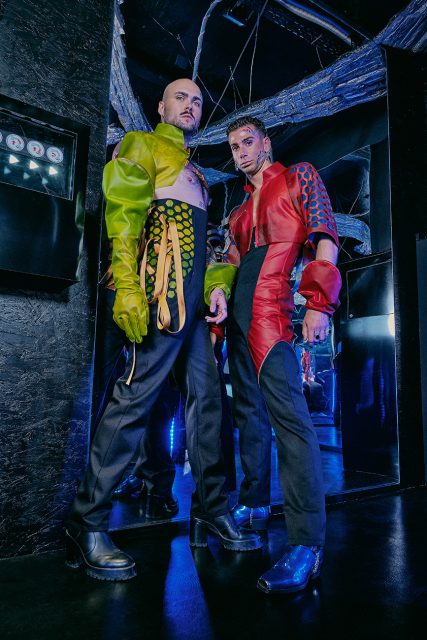 |
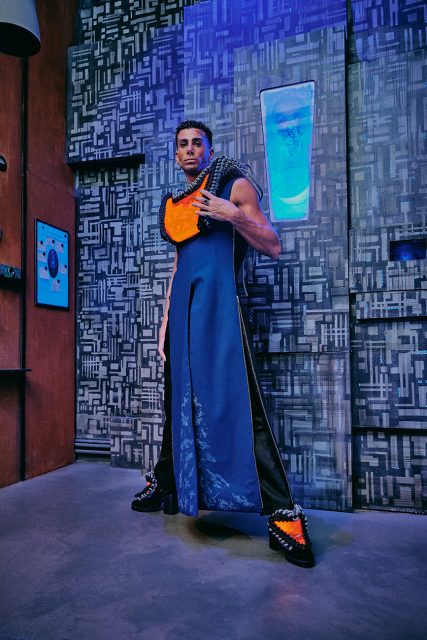 |
Œ: From the Adriatic Coast, how did you end up studying fashion at Universität der Künste?
Alessandro: Once I’d finished school, I was pretty clueless about what to do with my life. Hence, I moved to Berlin to get a new experience and perspective about the world. Here is where I got closer to the idea of studying fashion design, which was everything but obvious to me at first. As a teenager, I pretty much hated fashion and people who claimed to be into it. Nevertheless, I still cared a lot for my appearance and used to customise my clothes or have them customised by my dad. He has been working all his life as a leather goods manufacturer and taught me how to as well. I was very much into metal music, I also used to play guitar in a band with my friends. And that was my style of clothing too – spikes, chains, leather and boots. The exact opposite of what fashion was in Italy at that time.
But, Berlin showed me the richness and diversity that fashion can actually have, and I realised that not everything in fashion has to be unreflected conformism. There is a place where you can be accepted, no matter who or how you are. In Berlin, I got curious about learning more about society and myself, I wanted to do something creative and work with my hands. So I took the decision of studying fashion at the UdK.
Œ: Is there something in particular that ignites creativity within you?
Alessandro: Contradictions in society always make me think a lot. There are so many things we assume as facts or theories that influence our behaviour when actually, they might just exist due to a perception of a certain time or culture. That is not to say that every contradiction is wrong or harmful – I believe that understanding these phenomena can make us grasp a wider understanding and acceptance of the differences between individuals and culture. Ultimately, assisting with positive growth.
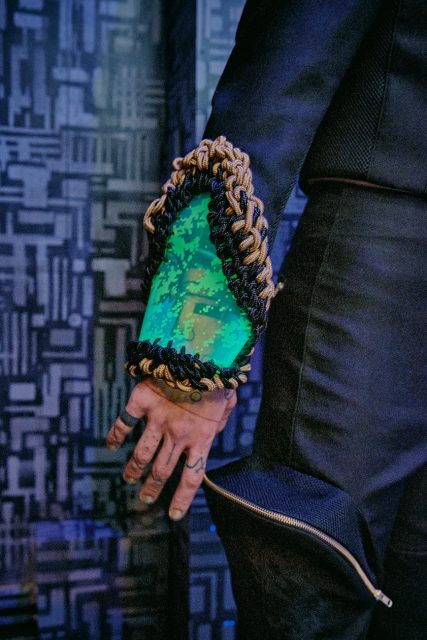 |
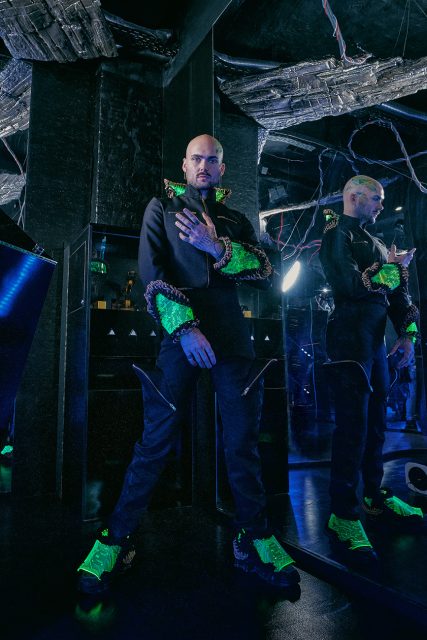 |
Œ: You chose to focus on the very topical issue of toxic masculinity for your graduate collection… Can you walk us through how you’ve used design to dismantle such a compounded social construct?
Alessandro: In my graduation work, I dealt with the topic of toxic masculinity within the context of fashion, video games and the military. In the last few years, these three elements have become increasingly interwoven, and each of them has its own way of creating idealistic forms of hegemonic masculinity. It’s important to remember that this is a social construct, and as such, it can and should be deconstructed since it is harmful to FLINT and LGBTQIA communities. Sometimes even to the “toxic” men themselves.
However, it is not that easy. Even once someone comes to terms with their own toxic masculinity, getting rid of it might be possible, but only to a certain extent. We can actively stop being “toxic” and discriminating against others, but we can never completely erase any part of our minds. I also believe it is unhealthy to forcibly repress our own personalities. Sometimes we actually need to give it some space, to properly understand it and then make sure it’s not harmful to ourselves or others.
With my collection, I wanted to create a space where specific toxic masculine traits can be analysed. For doing this, I decided to design with elements that represent this idea of masculinity alongside their own contradictions – the purpose to highlight their irrationality and factitiousness. Ultimately, demonstrating that men do not actually need these traits, they are not naturally programmed into us. We have the power to can change them.
For instance, I’ve worked with details and original cuts from military uniforms of the 19th century. These uniforms were boldly different from the manly, emotionless and glorified soldiers of our generation. The golden embroidery and embellishments were called “military crinoline” and were for many a sign of effeminacy. The fact that soldiers had to wear corsets in order to fit into their extremely tight uniforms – as imagined – also raised much criticism.
As for the masculinity represented in video games, I have been inspired by the recurring cyber-futuristic aesthetic, which showcases lone warriors with robotic limbs that can carry out every imaginable kind of function. They have manly operating displays and holograms surrounding them, 90% of which has no actual function whatsoever other than purely aesthetic. So I took this unfunctional functionality, and reinterpreted it for example, with fluorescent acrylic glass, laser-cut and engraved with a digital camouflage pattern. I then bent it with heat into sculptural shapes and recreated around it, the golden embroideries with macramé, and hand-stitched these bulky ornaments on the tight-fitting uniforms.
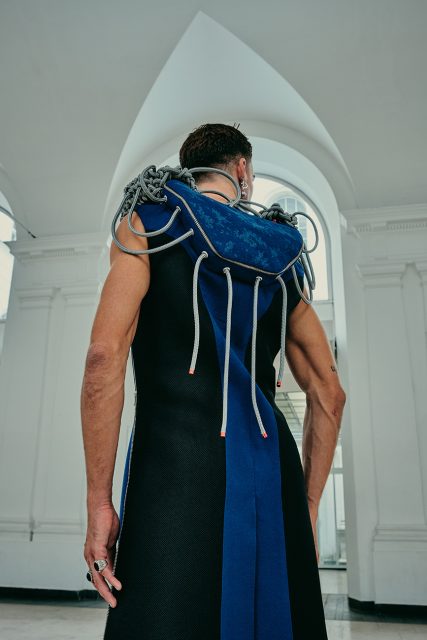 |
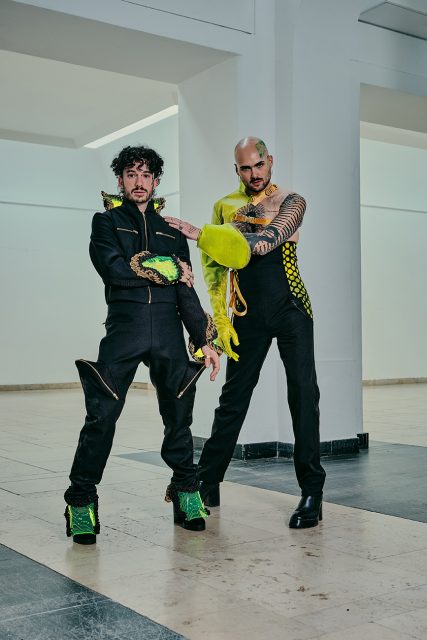 |
Œ: Thinking about yourself as a brand, are you able to recognise aspects in your own designs that set you apart from other designers?
Alessandro: Even after graduating, I still find that a difficult question to answer. What proof do I have that nobody else has the same or similar ideas to me? But even so, I have often been told that my work does have something that makes it really “mine”. For starters, one uniqueness is the origin of the stories I am telling. So far one of my main sources of inspiration has been my personal experiences. Actually, designing was also some sort of way to understand them and myself better. At least consciously, while designing I try as much as possible to put aside what is currently happening in fashion. I want my work to look like it does purely because of what it is and aims to talk about. Not because people are into a certain kind of aesthetic right now. I think that aspect makes my work original. It’s honest.
Œ: So now you’ve graduated, what’s next?
Alessandro: I will continue with some form of master’s studies. I want to specialise in digital 3D fashion for AR and VR. I believe that a lot is going to happen in that field, and after improving my handcrafting skills at the UdK I want to focus on the digital ones elsewhere. But not immediately! First, I aim to get some more work experience – and money…
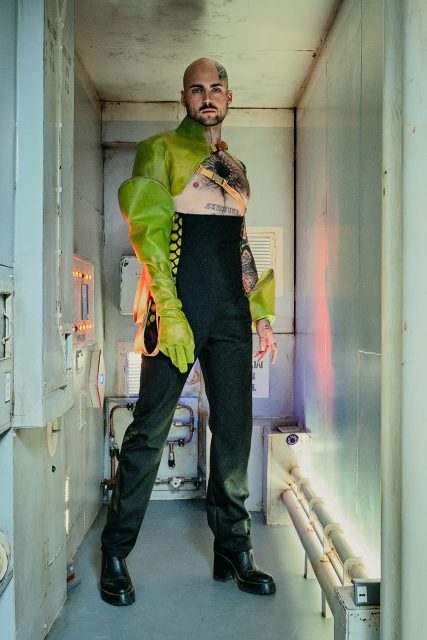 |
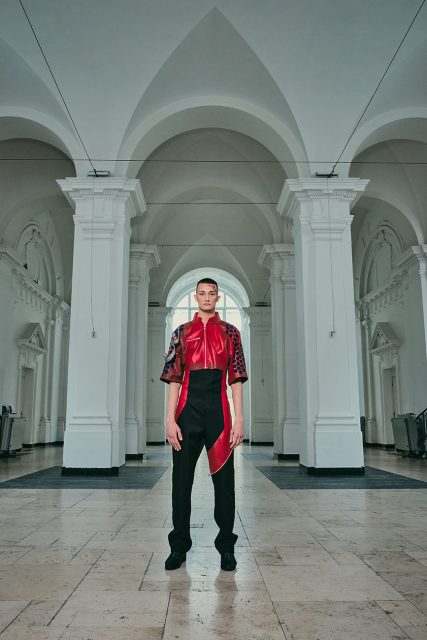 |
Fashion – Alessandro Gentile
Photography – Marco Lombardi
Makeup – Elisa Sankowski
Model 1 – Niklas Jeroch
Model 2 – Emanuele Corsini
Model 3 – Timo Thomalla (Faze Models)
Model 4 – Alessandro Gentile
